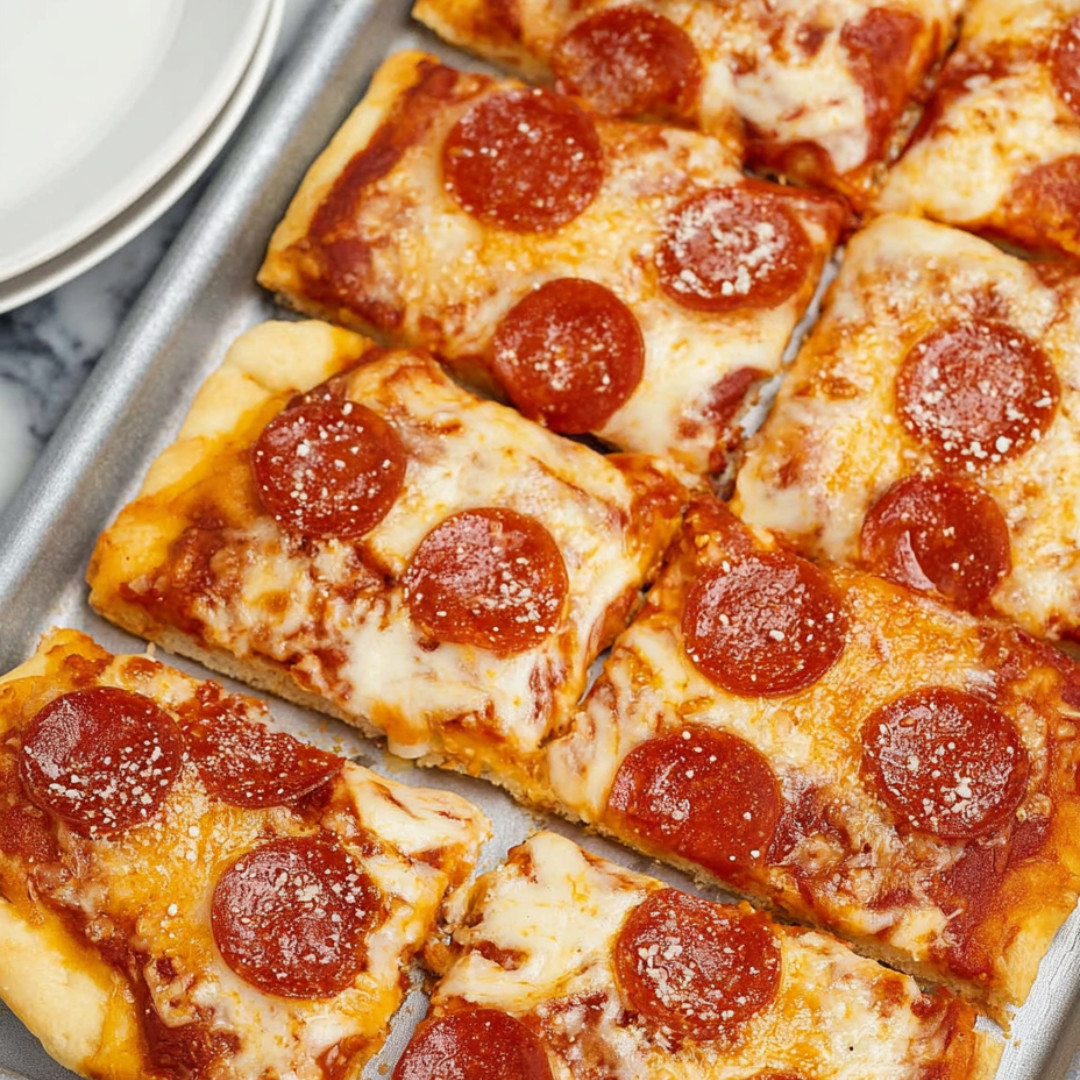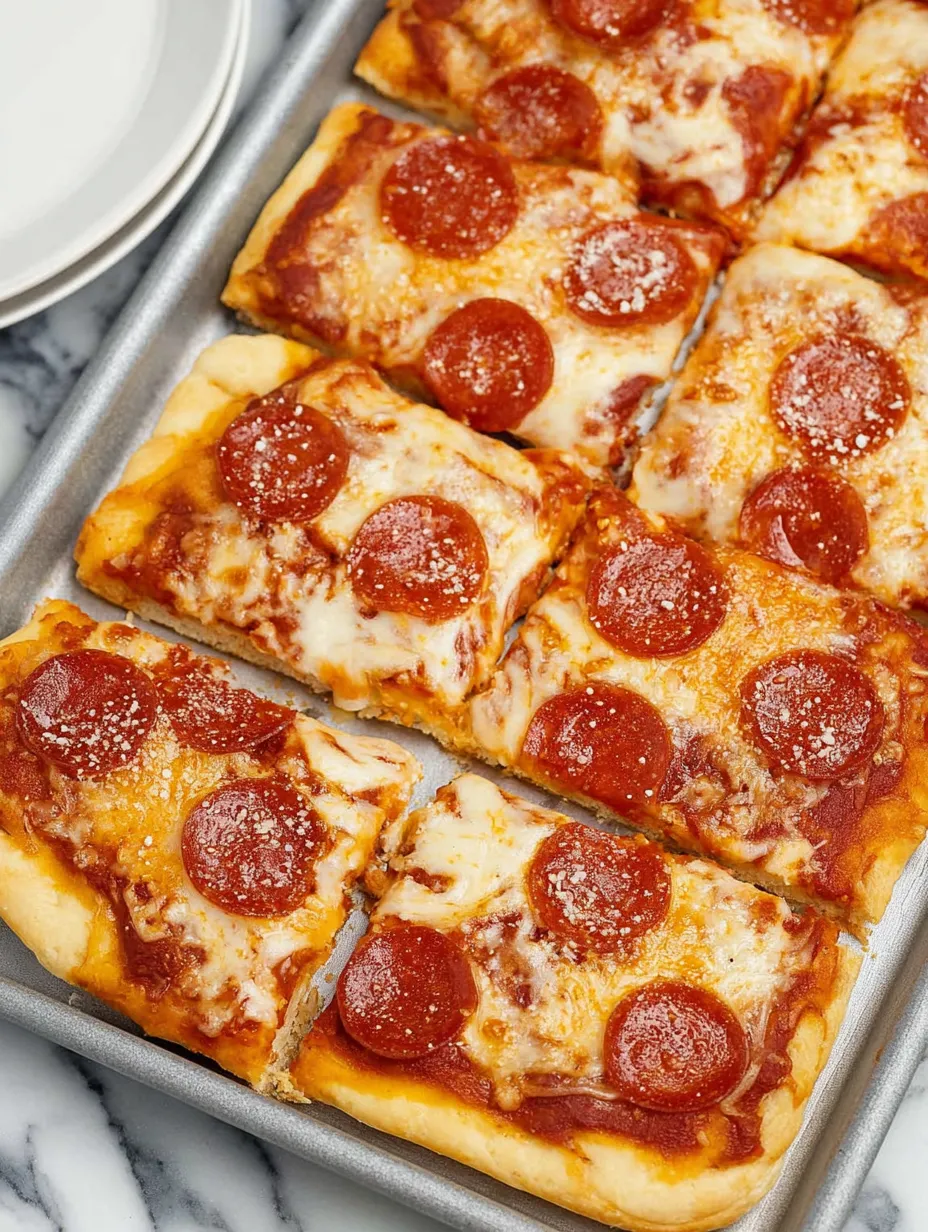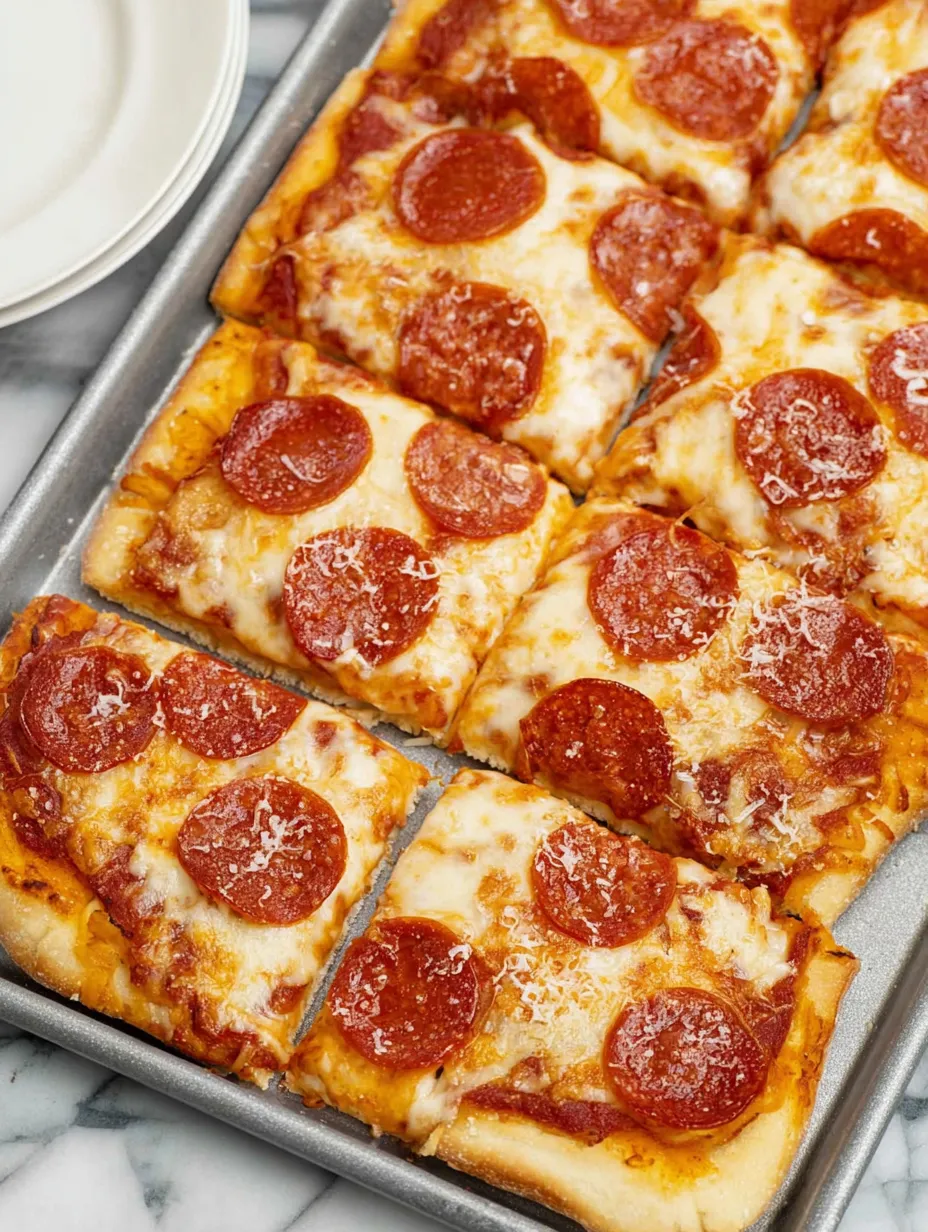 Save
Save
The warm scent of yeasty dough rising in a sunlit kitchen always brings back memories of Friday nights—pizza night, when my parents would let me knead the dough while my brother fished out pepperoni slices from the bag, sneaking more into his mouth than onto the pan. Sheet pan pizza was our go-to: easy enough for impatient hands, delicious enough that seconds (and thirds) disappeared fast. The beauty was always in its fuss-free, crowd-pleasing comfort—a satisfying slab of crispy, cheesy joy, baked and sliced right on the pan.
I first stumbled onto the magic of sheet pan pizza during a college potluck when our group realized we couldn’t all crowd around the oven waiting for individual pies. We pressed our dough into a borrowed roasting pan, slathered on sauce, and let the oven do its work. The results converted me for life: golden, crisp crust and the ability to feed a group, all at once.
Essential Ingredients
- All-purpose flour: Provides structure; choose unbleached for better rise and flavor.
- Instant yeast: The key to a quick, reliable rise; look for vacuum-sealed packets with an active expiration date.
- Sugar: Jump-starts yeast activity and bolsters browning; a teaspoon more brings a slightly sweeter crust.
- Salt: Balances dough flavor; fine kosher salt disperses best.
- Olive oil: For tender crumb and crisp, golden edges; use extra virgin for deeper flavor.
- Warm water (110-115°F): Encourages yeast to thrive; test with your wrist—it should feel just warm.
- Pizza sauce: Bright, slightly tangy base; jarred sauces can be great, just avoid overly sweet brands.
- Mozzarella cheese: Melty, stretchy, classic; low-moisture blocks shredded fresh yield the best melt.
- Pepperoni: For savory, spicy punch; use thick-cut for satisfying crisp edges.
- Parmesan cheese (optional): For a salty finish; grate it fresh.
When shopping, I always squeeze the flour bag for freshness (should feel soft, not solid), check that my yeast is stored cold at the market, and give mozzarella a sniff—it should smell creamy, not sour.
Cooking Process
- Mixing the Dough:
- Whisk dry ingredients to evenly distribute yeast and salt before adding water and oil. This prevents patches of blandness or bitterness.
- Kneading for Structure:
- Mix (either by hand or machine) just until the dough is smooth and elastic. This develops gluten, creating a chewy but tender bite.
- Rising Right on the Clock:
- Letting the dough rest, even for a short 15 minutes, gives yeast a window to puff the dough and strengthens flavor.
- Stretching the Base:
- Gently press dough to the corners of a well-oiled sheet pan. If it resists, let it relax—this relaxes gluten so the dough stops shrinking back.
- Layering Flavor:
- Sauce goes on first, followed by a blanket of cheese, then pepperoni. Cheese underneath allows toppings to crisp while bubbling, and edges caramelize.
- Oven Finale:
- Bake at a rip-roaring 450°F for golden brown perfection. Short, high-heat bakes keep the crust airy and mozzarella gooey.
- Letting It Rest:
- Resist the urge to slice immediately. A five-minute rest locks in juiciness and makes cutting easier.

Recipe Highlights
Feeds a crowd, family-style—with 28g protein per serving, it’s filling, too. A 51-minute start-to-finish time fits even busy weeknights. Adaptable for thick or thin crust, to please both crispy-edge and chewy-crust devotees.
My favorite twist on this is to scatter roasted vegetables or dollops of ricotta on half the pie for the veggie-curious in my house. One memorable mishap: I once forgot to oil the pan—don’t do it! The crust soldered itself on, and we had to chisel our pizza off in ragged chunks. A thin coat of oil is everything.

Cooking Secrets
- Oil Every Inch – Coat the pan up the sides and into the corners. This guarantees a deeply bronzed, easy-release crust.
- Let the Dough Rest – If it snaps back while stretching, pause for five minutes. The dough relaxes, then shapes like a dream.
- Hot and Fast – A blazing hot oven ensures crisp bottom and bubbling cheese before anything dries out.
After a lifetime of pizza Fridays, I’ve learned that the key to any great sheet pan pizza isn’t complicated technique—it’s a little patience, a well-oiled pan, and the freedom to make it your own. Pass the pie, please.
Frequently Asked Recipe Questions
- → How do you prevent pizza dough from springing back when stretched?
Allow the dough to rest for a few minutes if it resists stretching. This relaxes the gluten, making it easier to shape.
- → Can I use store-bought dough instead of homemade?
Yes, both homemade and pre-made doughs work well. Let chilled dough reach room temperature for the best texture and stretchability.
- → What's the best way to get a crispy crust?
Generously oiling your pan and baking at a high temperature help achieve a crisp, golden bottom while keeping the edges tender.
- → How can I make a thicker or thinner pizza?
Use a smaller pan and more dough for a thicker, fluffier result. For thinner crust, stretch the dough onto a larger surface.
- → Is it possible to prepare the pizza ahead of time?
You can make the dough and assemble the pizza in advance, then refrigerate. Bake just before serving for the freshest taste and texture.
